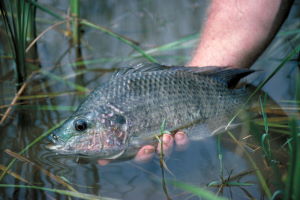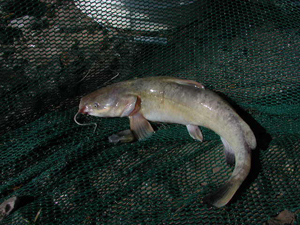Fish
Fish were an important resource for the native peoples who lived along the Rio Grande. The most compelling archeological evidence of this comes from La Cabrana Pueblo near El Paso, where more than 5,000 fish bones and scales were recovered. Freshwater drum (Aplodinotus grunniens), catfish (Ictaluridae), teleost fish, and minnows have been identified at La Junta. Notched pebbles interpreted as “sinkers” or net weights are also common at La Junta and Cielo complex sites overlooking the Rio Grande valley. Fish were also shot with bows and arrows and speared.
Spanish explorers who traveled along the river during the late 16th century noted that all of the native peoples they encountered exploited fish to some degree. They dubbed one group who relied particularly heavily on fish the “Gente de Pescado” (people of the fish) or Pescados. During the Spanish Colonial period, both the Mission Indians of El Paso and groups in La Junta continued to exploit fish, despite the introduction of livestock and other food sources by the Spanish.

